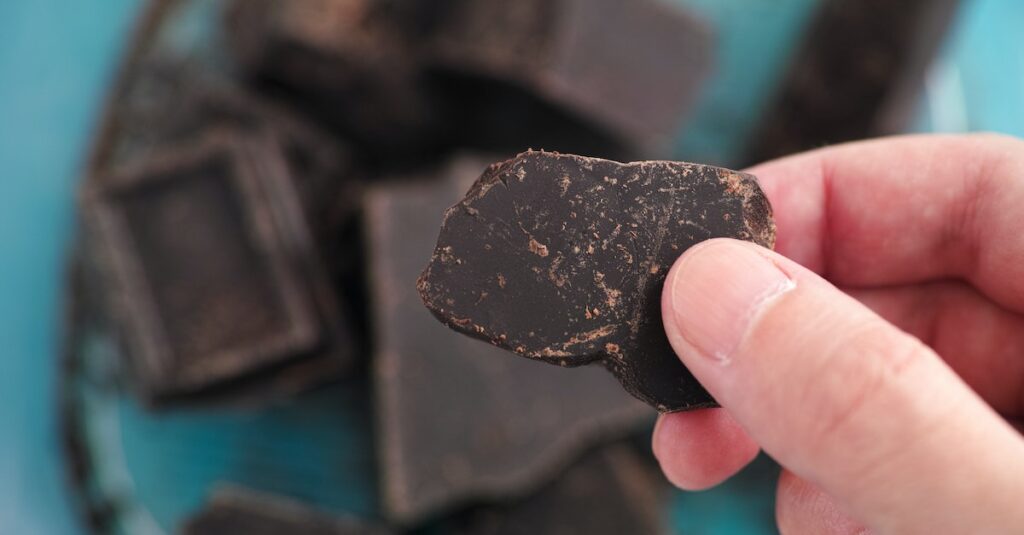Picture this: You’re in the store, and you want to make sure you eat 30 different plants this week. What do you buy?
Did you know that some items in the spice aisle — and even the confectionary aisle — can count as plants?
As you’ll see, you might already be consuming more plants than you realize.
But first off, what serving size counts toward your 30 plants a week? According to ZOE’s Scientific Co-Founder Prof. Tim Spector:
“There are no exact serving sizes, but a handful of fruits, vegetables, whole grains, and beans — and a teaspoon of spices, seeds, and herbs — is a good starting guide.”
Join the community
Be the first to know about ZOE’s breakthrough research, content from the world’s leading scientists, and more.
1. Choose chocolate
Cocoa beans, which become chocolate, are technically seeds. And because the beans are fermented during manufacturing, they contain a heady cocktail of healthy compounds.
This includes polyphenols and fiber, which help feed your “good” gut bacteria.
So, minimally processed dark chocolate that’s at least 70% cocoa counts as a plant. Feel free to enjoy it in moderation.
If you’d like to learn more, we have a podcast episode on the science of dark chocolate.
2. Coffee counts
Coffee beans are also seeds. So, your morning coffee counts as a plant, too.
Surprisingly, coffee contains fiber. In fact, in a podcast episode on coffee, Tim explains that there’s more fiber in coffee than a glass of orange juice.
And ZOE’s PREDICT studies show that people who drink coffee tend to have more diverse gut microbiomes, possibly due to coffee’s fiber.
If you’re wondering, instant and decaf coffee count, too.
3. Popcorn is a plant
Popcorn is a whole grain. And because whole grains are less processed than refined grains, like white rice, they contain a wealth of nutrients.
Plus, thanks to their fiber, whole grains are less likely to cause a pronounced blood sugar response than refined grains.
So, consider swapping refined grains for whole grains to raise your plant count.
These whole grains all contribute to your 30 plants per week:
-
barley
-
bulgur wheat
-
millet
-
quinoa
-
black, brown, red, or wild rice
And when you’re choosing popcorn, steer clear of added flavorings, salt, or sugar. Or, make your own at home.
4. Sprinkle on seeds
Seeds are rich in protein, healthy fats, and fiber, and they make an easy addition to many meals.
Each type of seed has a different nutrient profile, so each type counts toward your 30.
And there are loads to try, including chia, hemp, flax, poppy, pumpkin, sesame, and sunflower.
So, sprinkling a mix of seeds on your meal will add a bunch of plants within seconds. And they work with a range of savory and sweet dishes.
Try adding seeds to:
-
yogurt
-
salads
-
grains
-
soups
-
sandwiches
Also, seeds can make a nice snack on their own. And if you toast them, they’re extra tasty.
5. Add some nuts
Like seeds, nuts are packed with nutrients, including fiber and healthy fats. You can buy bags of mixed nuts and add them to a wide range of foods.
If you’re in the United Kingdom, it’s cheaper to buy nuts from the baking aisle, rather than the snack section. Plus, these nuts are less likely to be coated in salt, flavorings, or other additives.
Try adding whole or chopped mixed nuts to:
-
yogurt
-
salads
-
stir-fries
-
steamed vegetables
-
grains
-
pasta dishes
Nut butters are another option, but make sure you choose minimally processed products that don’t have too many additives.
And of course, nuts make a delicious snack on their own. ZOE has a podcast episode dedicated to nuts and their health benefits if you’d like to learn more.
6. Add herbs
As Tim mentioned above, a teaspoon of herbs or spices counts toward your 30 plants a week.
Most herbs and spices are relatively inexpensive and easy to store, and they can really help your dishes sing.
Try adding:
-
mint to salads, grains, peas, or carrots
-
rosemary to roasted vegetables
-
basil to pestos, dressings, soups, or salads
-
chives to stews, salads, fish, and poultry
-
coriander to salads, soups, curries, and stir-fries
-
parsley to omelets, sauces, salads, and soups
The possibilities are truly endless, so feel free to experiment.
Join our mailing list
Sign up for fresh insights into our scientific discoveries and the latest nutrition updates. No spam, just science.
7. Spice it up
Spices count, too. They’re all derived from plants and contain a diverse selection of healthy compounds.
Try adding:
-
cumin or nutmeg to soups, chilis, and stews
-
chili powder, cayenne, or paprika to anything that needs a kick
-
ginger to curries and salad dressings
-
pepper to most savory dishes
-
cinnamon to your pasta sauce
-
turmeric to roasted vegetables and scrambled eggs
If you’re new to this, we have a podcast episode on the health benefits of spices and how to use them.
We hope these hints will make your 30-plant goal seem less daunting. You’re probably well on your way already.

